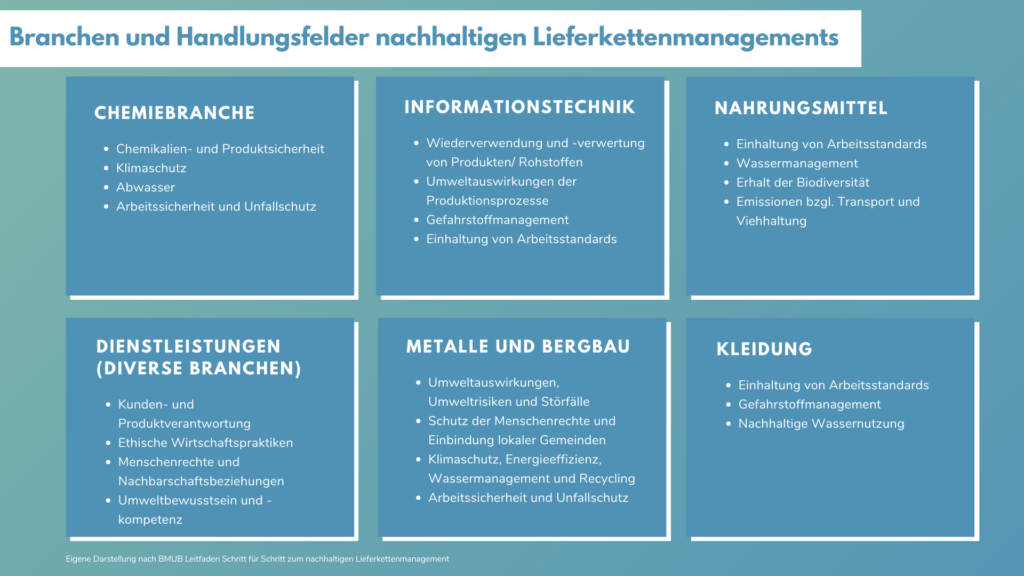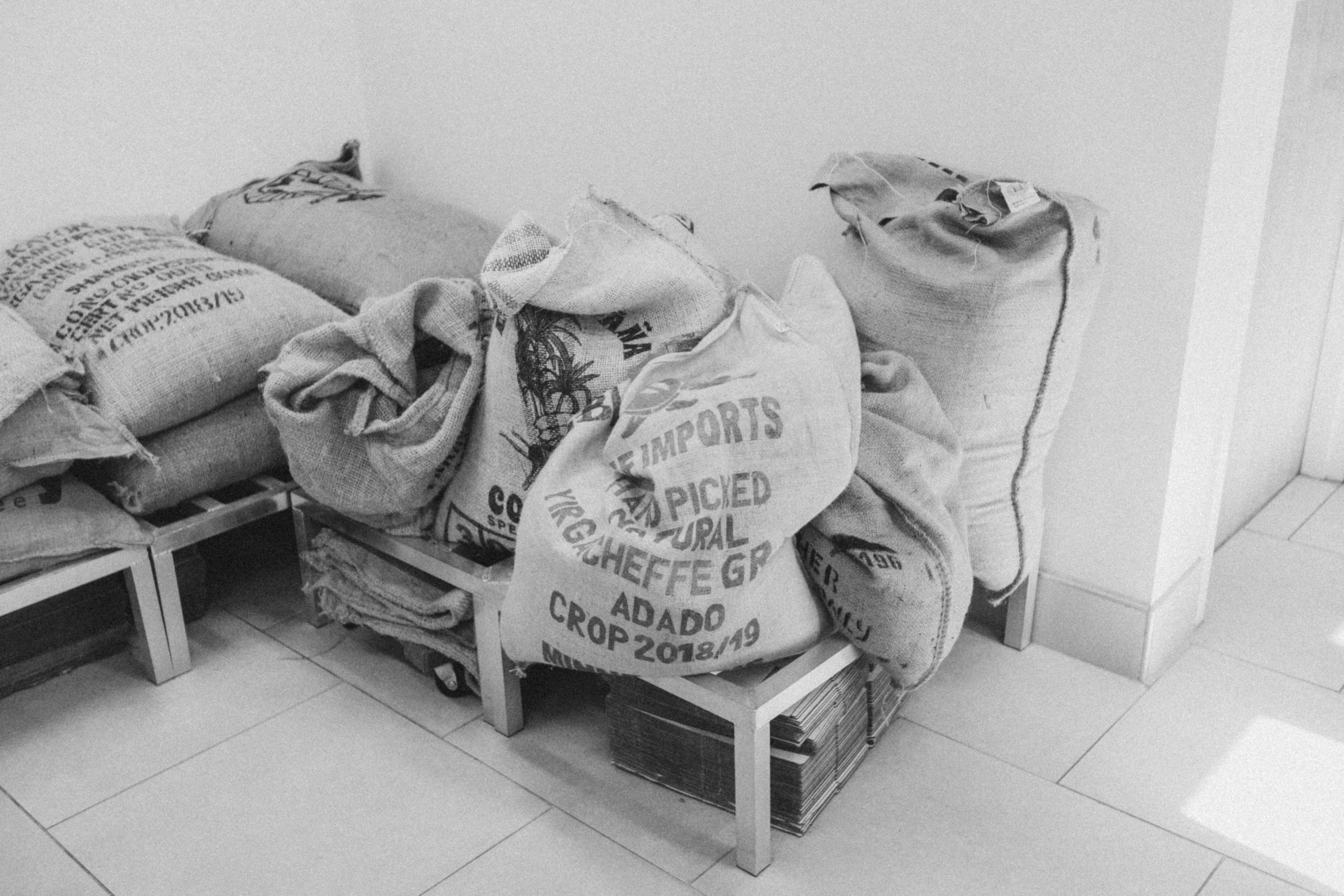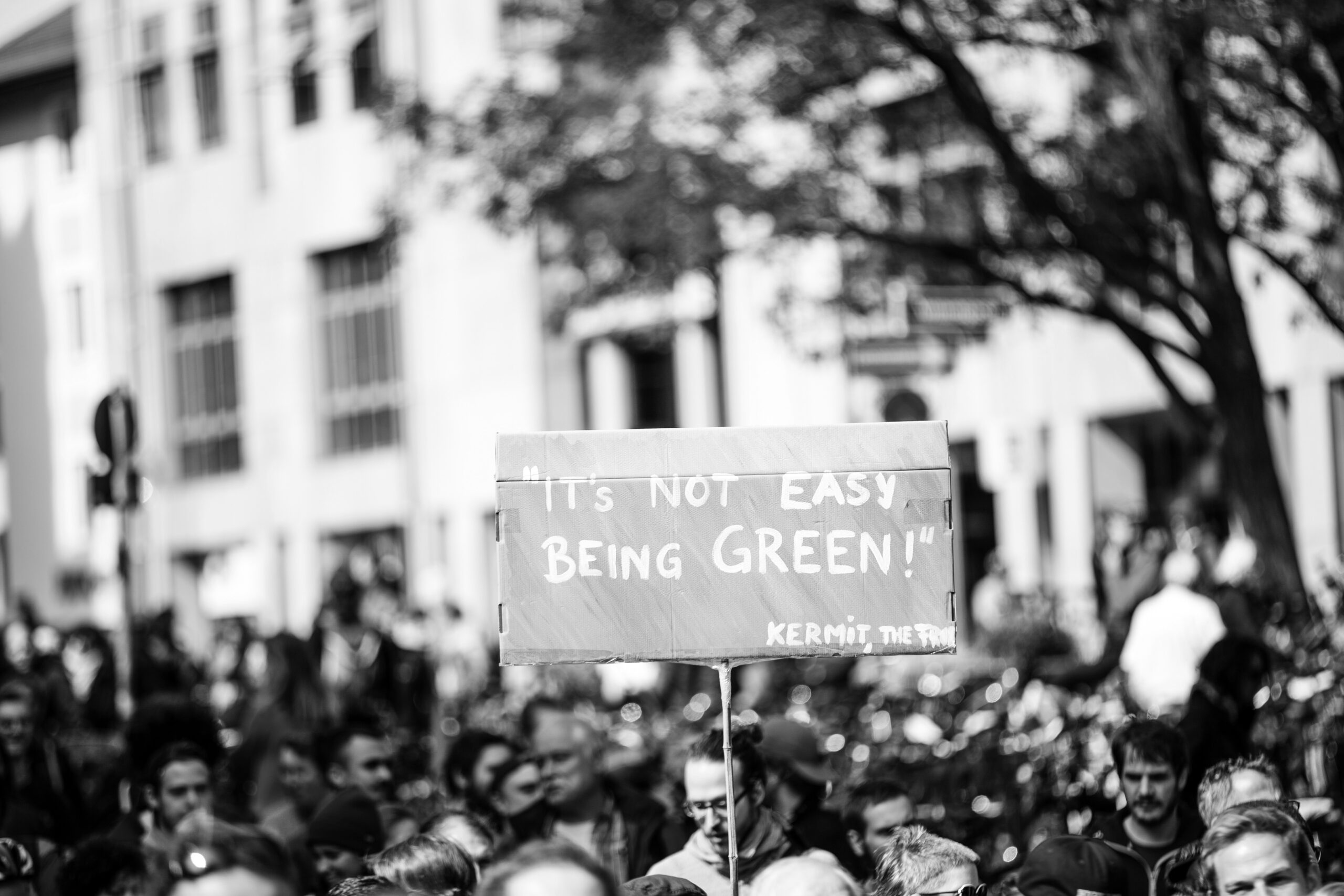It is becoming increasingly important how environmentally friendly and fair the widely ramified supply and value chains of German companies are. Not only customers are attaching more and more importance to scandal-free supplier and business relationships, but legislators are also creating new framework conditions. Against this background, small and medium-sized enterprises face new challenges in terms of recording, testing, improving and communicating environmental and social compatibility in the various stages of their own value creation.
- Lesezeit: 7 Minuten

Höre unseren Podcast zum europäischen Lieferkettengesetz: die CSDDD
Klicken Sie auf den unteren Button, um den Inhalt von anchor.fm zu laden.
In dieser Podcast-Episode des Podcasts „Sustainability Made in Europe: A Policy Podcast on Finance, Reporting & Governance“ mit Dr. Colin Bien geht es um eine Reihe von Fragen rund um die CSDDD:
- Was ist der Anwendungsbereich der CSDDD?
- Welches sind die konfliktträchtigen Themen im Entwurf der CSDDD?
- Wie wird sich die Richtlinie auf Unternehmen in der EU und entlang der Lieferketten auswirken?
What is sustainable supply chain management and the Supply Chain Act?
A sustainable supply chain is created by considering all value-added processes and taking into consideration social, ecological and economic premises. This way, negative impacts on people and the environment can be identified and eliminated. The chain begins with the extraction of raw materials and follows the entire life cycle of a product up to its disposal .
The discussion on such a sustainable supply chain was boosted by the published draft law on corporate due diligence in supply chains . It proposes an obligation for companies with more than 3,000 employees from 2023, and later from 1,000 employees , to ensure compliance with human rights along their supply chains. For this purpose, complaint options are to be created and reporting on activities is to be carried out, among other things.
The aim is not only to promote the implementation of human rights, but also to reduce competitive disadvantages abzubauen for companies that are already voluntarily committed to this.
Entdecke konkrete Maßnahmen für die nachhaltige Lieferkette
What is this about for SMEs and who do I need to involve?
Small and medium-sized enterprises are often themselves part of a value chain of larger business partners and are positioned in the middle of the process. This means that the focus is on raw material suppliers, processing companies and the company's own customers. It requires cooperation with all players.
For an overview of who all belongs to the supply chain, the company's own procurement processes should first be analyzed. This reveals the structures and existing actors, which can then be examined for social and environmental risks. At the first stage of the value chain, the direct suppliers are betrachtetSubsequently, indirect suppliers should also be included in the next step, as they are usually closer to the raw material extraction. It is important to answer the following questions:
What are the upstream stages of value creation in the supply chain?
Who are the suppliers - from direct suppliers to raw material producers?
Which activities take place at each stage of the supply chain?
Where does the production/service take place in each case?
Aus dieser Analyse ergibt sich ein Netzwerk aus verschiedenen Stakeholdern, Wertschöpfungsstufen, Aktivitäten und geografischen Verortungen, die mit dem Unternehmen im Zusammenhang stehen.
Vergleichsliste LkSG & CSDDD runterladen
Legal framework of a sustainable supply chain
Der gesetzliche Rahmen zur nachhaltigen Lieferkette stützt sich auf das „Gesetz über die unternehmerischen Sorgfaltspflichten zur Vermeidung von Menschenrechtsverletzungen in Lieferketten”, kurz: „Sorgfaltspflichtengesetz“. Es hat zum Ziel, Rechtssicherheit für deutsche Unternehmen zu schaffen, indem binding regulations on corporate due diligence along the supply chain. This is aimed at creating more justice for workers worldwide and strengthening victims of human rights violations as well as civil society.
Even though countries like France and the Netherlands already have corresponding laws, the EU Commission is planning an EU law this year. It will make companies liable if they violate or contribute to violations of human rights, environmental standards and good governance. Currently, it looks as if European legislation will be much stricter than German legislation.
Benefits of sustainable supply chain management
Even if the path to sustainable supply chain management initially seems long and costly, it can pay off. The benefits range from risk minimization to financial optimization opportunities. Those who focus on the social responsibility of their actions create a corporate culture that emphasizes long-term relationships, which can be an advantage especially in times of crisis. In addition, efficiency improvements in supply operations can reduce delivery, raw material and energy costs.
Neben den Chancen sollten aber auch die Risiken entlang der Lieferkette im Blick genommen werden. Das hilft dabei, das fundamentally develop risk management and to be prepared for possible impacts. And these are just a few of the many benefits that sustainable supply chain management can bring.
International Frameworks
Die Wirtschaft von heute ist stark globalisiert und nicht selten erstrecken sich Wertschöpfungsketten über Länder und Kontinente hinaus. Da es unterschiedliche Rechtsrahmen für Menschenrechte und Arbeitsschutz gibt, wurden Rahmenwerke entwickelt, die für global agierende Unternehmen als Hilfestellung fungieren. Diese dienen als Orientierung bei der Umsetzung von Maßnahmen zur nachhaltigen Lieferkette.
United Nations Guiding Principles on Business and Human Rights
One important framework is the United Nations Guiding Principles on Business and Human Rights. In addition to the state's duty to protect, the Guiding Principles also see corporate responsibility on the part of companies and make it clear that their actions can have a positive impact on labor, social and environmental standards. It is particularly important to exercise this responsibility in countries where the state's duty to protect does not apply comprehensively, because this is where the greatest risks of negative impacts otherwise exist.
OECD Guidelines for Multinational Enterprises
Another international framework is the Guidelines for Multinational Enterprises of the Organisation for Economic Co-operation and Development (OECD). Auch dieses Werk hat das Ziel, global agierenden Unternehmen eine Unterstützung zu geben beim Umgang mit Menschenrechten und Sorgfaltspflichten. Sie wurden von den Mitgliedsstaaten in Zusammenarbeit mit Gewerkschaften, Unternehmen und der Zivilgesellschaft entwickelt und basieren auf freiwilligem Engagement.
Social standards of the International Labor Organization (ILO)
Beim Rahmenwerk der ILO handelt es sich um eine Sammlung von insgesamt 68 Regeln in den Bereichen Beschäftigung, Ausbildung, Arbeits- und Lebensbedingungen sowie Arbeitsbeziehungen. Die Richtlinien sind nicht nur an globale Unternehmen gerichtet, sondern auch an Regierungen und Arbeitgeber- sowie Arbeitnehmerverbände. Im Vordergrund stehen die vier Grundprinzipien der Organisation:
- abolition of forced labor,
- elimination of child labor,
- promoting the right to organize and negotiate collectively,
- prohibition of Discrimination,
UN Global Compact
The developer of another framework may already be familiar from sustainability reporting: the UN Global Compact. This is an international association of companies that have committed themselves to social and environmental goals. One of the key points is the assumption of responsibility for respecting human rights along the supply chain.
What steps can I start with?
Der erste Schritt in Richtung eines nachhaltigen Lieferkettenmanagements ist die Analyse der Ausgangslage. Hierbei können verschiedene Instrumente genutzt werden, wie zum Beispiel die procurement management analysis, or the analysis of existing standards.
“Wir haben für Euch einen Maßnahmen-Katalog zur Einführung einer nachhaltigen Lieferkette entwickelt, den Du here. findest.”
Diese Einschätzung hilft zu verstehen, wo Chancen liegen, die genutzt werden können und wo Herausforderungen entstehen. Ist diese Analyse abgeschlossen, sollte eine strategy should be developed to specifically implement the opportunities and minimize the risks.
For those who want to learn more about this and other topics of sustainable management weiterbilden möchte, dem empfehlen wir die Lernformate der Online-Academy nRole.
WeShyft bietet Beratung und digitale Lösungen für ein nachhaltiges Lieferkettenmanagement
Wir helfen Dir, die Dokumentations- und Informationspflichten entlang der Lieferkette zu erfüllen und Deine ESG-Leistungen zu verbessern. Nimm jetzt Kontakt auf, um mehr zu erfahren!








